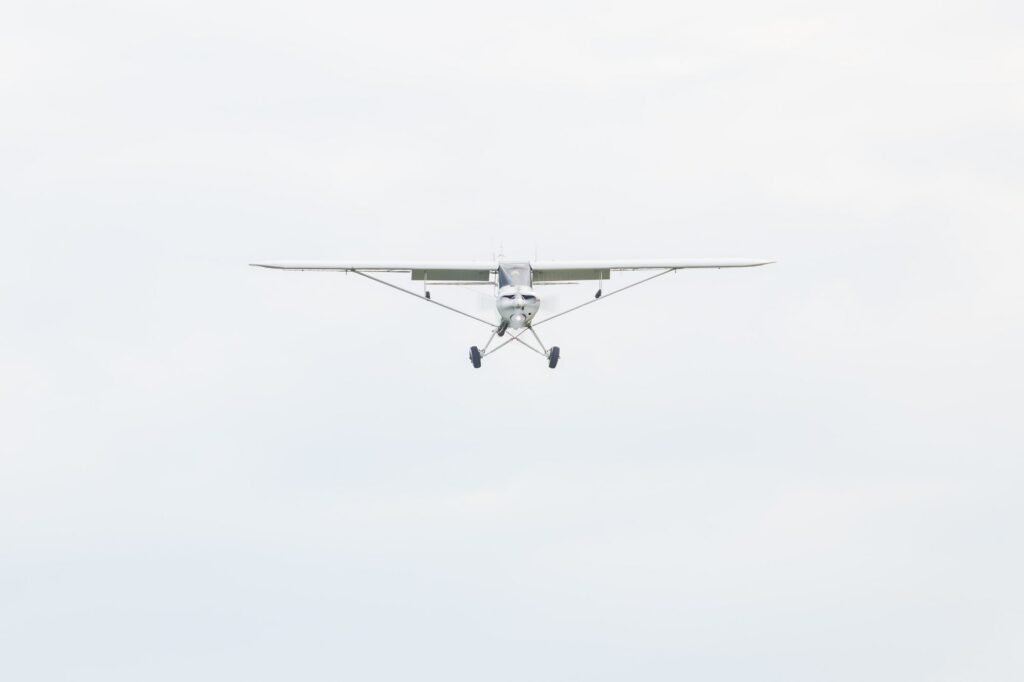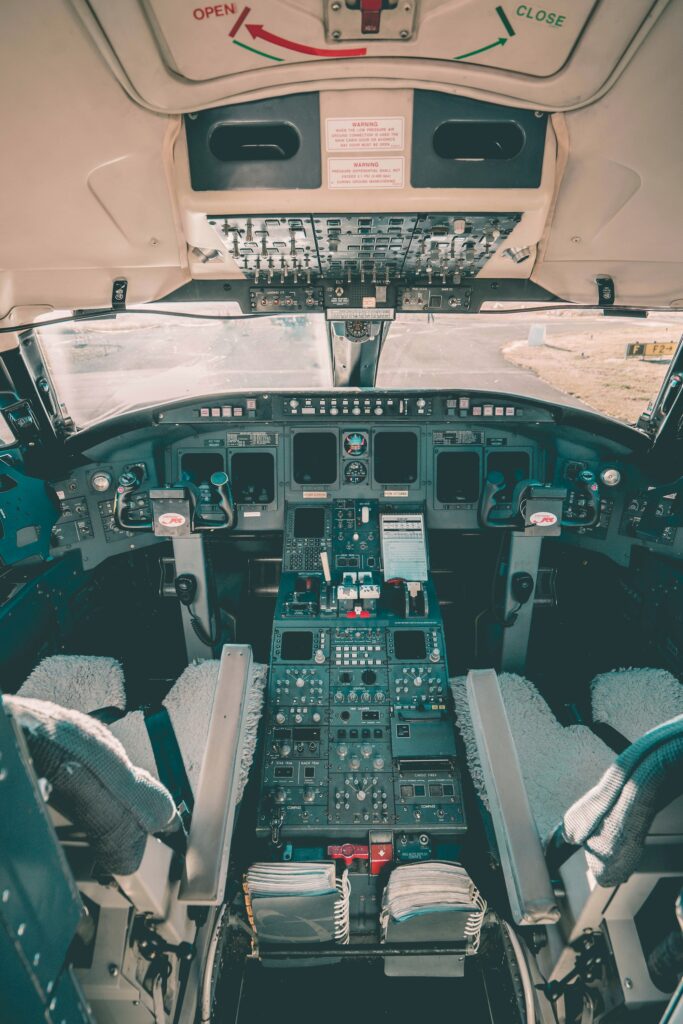
Just Look Outside: Why Your ASI Just Ain’t That Important.
Just Look Outside: Why Your ASI Just Ain’t That Important.
Pilots should view airspeed information in a broad context. Knowing our airspeed is helpful, but knowing our energy state is more important. And the quickest way to our energy state is a combination of looking outside and feeling the airplane. For VFR pilots, the gauges ought to be a backup.
Why This Matters
You might think “alright dude, I get that airspeed is not angle of attack and only gives a pilot so much information, but come on. Why does this really matter?”
That’s a genuinely fair question. In most pilots’ flight regimes, airspeed is a decent indication of angle of attack (AOA) and, combined with altitude, approximation of total energy state. But that’s not always the case. In situations with higher-than-normal load factor, in gusty conditions; at high angles of attack—essentially in scenarios where airspeed indicators tend to have very high margins of error—the airspeed indicator is not as useful; Unfortunately, the flight regimes that so often lead to loss of control are also the regimes where it’s least feasible to rely on an airspeed indicator for energy information. Pilots who rely on airspeed indications are primed to consult an instrument that will (1) distract them and slow their reaction time and (2) not even provide them particularly useful information.
So, let’s differentiate between pilots who treat airspeed as the indication of energy and pilots who treat airspeed as an indication of energy. The latter group will:
- Operate with higher overall situational awareness (SA)
- Fly maneuvers more precisely
- Fly with greater confidence
- Be more comfortable in regimes of high AOA
- Be more stabilized on approach, especially in gusty conditions
- Quickly recognize a rapidly increasing AOA trend
- Recover appropriately from inadvertent stalls
- Have more fun!
The funny thing about this whole discussion is a pilot who argues that over-focus on airspeed “doesn’t matter” sort of has to also concede that to them “flying well” doesn’t matter either. We’ll just say we disagree on that 😉
Ok, now let’s dive in a bit. This is not going to be a very technical discussion. This is about a perspective shift in human factors, not complex aerodynamics.
Energy management is critical. And good energy management starts with good AOA management.
Energy management is how we ensure we don’t violate the #1 rule of aviation: don’t hit anything.
What really, really matters is AOA. Pilots must interact with AOA in a variety of ways, including:
- Knowing if it is increasing or decreasing
- Knowing if an action will increase or decrease it
- Understanding the signs of approach to Critical AOA (stall)
- Understanding the AOA consequences of actions they take
You’ve heard it before. We can stall at any airspeed. But seriously, we can. Pilots that rely on airspeed to know how close they are to a stall are training themselves to react poorly when they do stall inadvertently. A pilot who relies on airspeed instead of AOA will be surprised by a stall, and be less-equipped to respond quickly and intelligently. Ironically, those pilots who pay attention to AOA are less likely to end up in the dangerous situation that they are more prepared to handle. Why? Because their energy-state awareness is not tied to a little needle (or airspeed tape) on a dashboard.
We have many indicators of AOA. And they’re all easier to use than an airspeed indicator, once you’ve got a little practice.
The first is sight picture. Because AOA is the angle between the chord-line and the relative wind, we can (while flying) approximate it as the angle between where we’re pointed and where we’re going. Guess what is pretty easy to see just by looking outside?
There are fun ways to explore this in the air. One is to look outside while you level off from a climb. Stabilize the airspeed and trim to relieve control pressure and see how close you are to level flight. Probably a lot closer than you’d expect, unless you’ve already done this before. Another way is to fly a closed traffic pattern with the airspeed indicator (or entire instrument panel) covered up. It’s a bit intimidating at first (take a flight instructor), but it’s not very difficult once you have a basic understanding of what the sight picture needs to look like. If you are struggling with approaches and landings, you may find that removing the extra information actually improves the quality of your pattern work.
Another way is by control pressures. When we require a lot of back pressure to keep the airplane moving where we want it to go, that’s a major indication that we are in a regime with increasing AOA. Although trim affects control pressures, we usually make conscious changes to trim settings. Along with this, sluggish control movements indicate turbulent air likely caused by a low airspeed regime (although not necessarily high AOA). Sluggish controls can also indicate turbulent airflow from wake. As we approach critical AOA the wings often buffet, which can be felt in the seat and also sometimes in the flight controls. That is a lot of information gleaned simply from being aware of how the airplane feels!
Similarly, we can use stick position. When a pilot induces critical AOA, it’s always at the same stick position for a given configuration. That sounds crazy, but it’s accurate. So, in addition to feeling out control pressure, you should be very aware of the actual stick position. If you’ve back-trimmed a lot it may take very little additional back pressure to reach the stick position that corresponds to critical AOA.
Wind noise is another indicator we can use, primarily as an airspeed indication. We can hear when we are moving fast. And we can hear when we are moving slow.
Even if we knew our airspeed perfectly, it’s of limited use. But we don’t get to see airspeed perfectly. The instrument is error-prone.
There are a variety of ways that airspeed readings can be erroneous. Lag in the instrument; parallax when reading the instrument from unusual or unfamiliar angles; minute changes that we can’t notice on a small gauge; And many airspeed indicators simply don’t indicate accurately at high angles of attack. In many light training airplanes, for example, a pilot can nearly peg the airspeed indicator at zero in slow flight. Obviously, they are not moving at zero knots.
If you are, for example, desiring to touch down at a very specific airspeed you should not fixate on the airspeed indicator. You should learn the sight picture for that airspeed, and touch down at that sight picture. Airspeed indicators are simply not as helpful a tool for such small and rapid changes.
Fly Better, Be Safer, and Have More Fun
Pilots are stunned to find that they can fly a very nice traffic pattern without once seeing the airspeed indicator. Before pilots see this, it sounds like a “holy hell get me on the ground now” kinda thing. But it’s not. It’s fun. It’s safe. And it’s confidence-building.
Birds are good fliers, at least most of the time. Interestingly enough, they don’t have an airspeed indicator. They can manage very slight changes in AOA to go exactly where they want to go. Pilots can do this too. But they can’t do it as easily by fixating on a tiny little instrument. That’s not to say that they can’t do it via an instrument. But there’s a reason the Instrument Rating is an additional rating, not the first certificate issued. An airspeed indicator is not a crutch for poor visual flying skill.
Imagine if your car had a gauge that told you whether you were aligned with your lane of travel, down to ±2º. Would you keep your eyes glued to that gauge while you drive a winding country road? Or would you simply look outside and stay in your lane? That’s sort of the predicament we have in aviation, except that a very large segment of the community learns to, and later teaches others, to pay a lot of attention to that little gauge.
This bring us to the topic of AOA gauges. There is currently a push to equip light training airplanes with AOA gauges. But an AOA gauge still presents some of the same issues that airspeed indicators do. It requires a pilot to look down on a tiny gauge to read something that can likely be read right through the damn windshield. We’re not saying that there aren’t great operational roles for AOA gauges, and the information presented is more valuable than just airspeed. But, to paraphrase the late General Chuck Yeager “if you need an AOA gauge to know your AOA, you probably shouldn’t be flying”. We will not comment on how that applies to military aviation, because that is beyond our scope. But it’s certainly the case in flying light piston airplanes.
Pilots have a far better understanding of how their energy state is changing when they are not reliant on the airspeed indicator for second-by-second information. Not fixating on airspeed frees them up to be aware of everything else around them: control pressures, stick position, wind noise, sight picture, movement through space, wind corrections, radio calls, other airplanes in the pattern, configuration changes, and more. This isn’t only true in light training aircraft, by the way. It’s true in large jets as well.
Not only are these pilots safer, but they can start flying more precisely. Which is good fun, and good for your career. After all, organizations—be it flight schools, charter companies, airlines, or the military—like to hire people who fly well.
Aim Small, Miss Small
Learning to fly accurately using sight picture and a broad AOA-focused technique helps pilots fly more precisely with less effort. It’s kinda like getting paid more to work less… it’s a no brainer. This has numerous benefits including increased confidence during checkrides (who cares about ±5 knots when you can reliably fly ±2 while looking outside), when learning on new airplanes, and when teaching others.
None of This is Original
If you enjoyed this article, please know that it was a blatant restatement of ideas in Wolfgang Langewiesche’s “Stick and Rudder”. We highly recommend reading it, especially the beginning chapters that discuss AOA. It remains highly relevant, even 80 years after its first publication.






